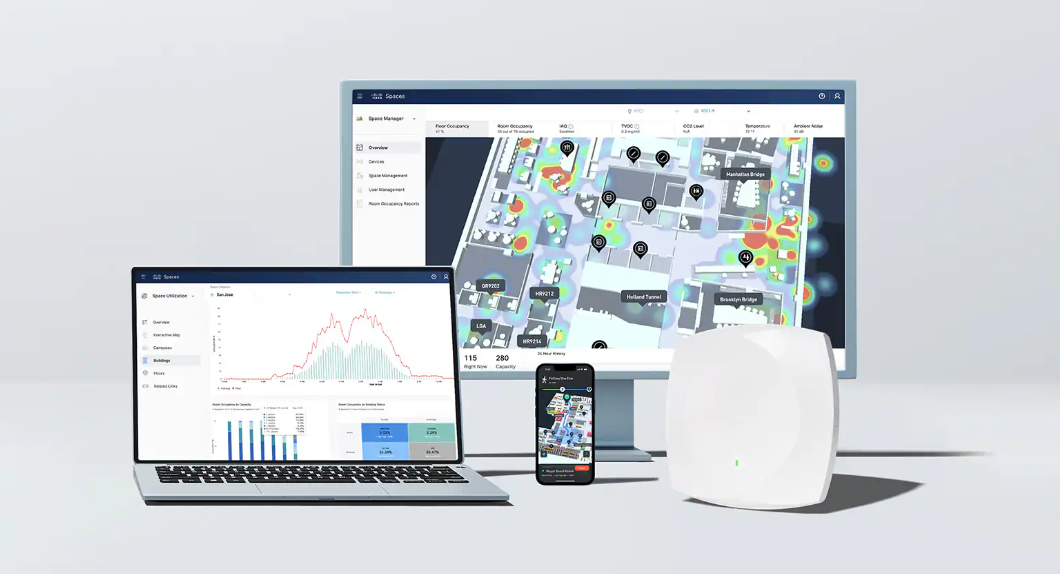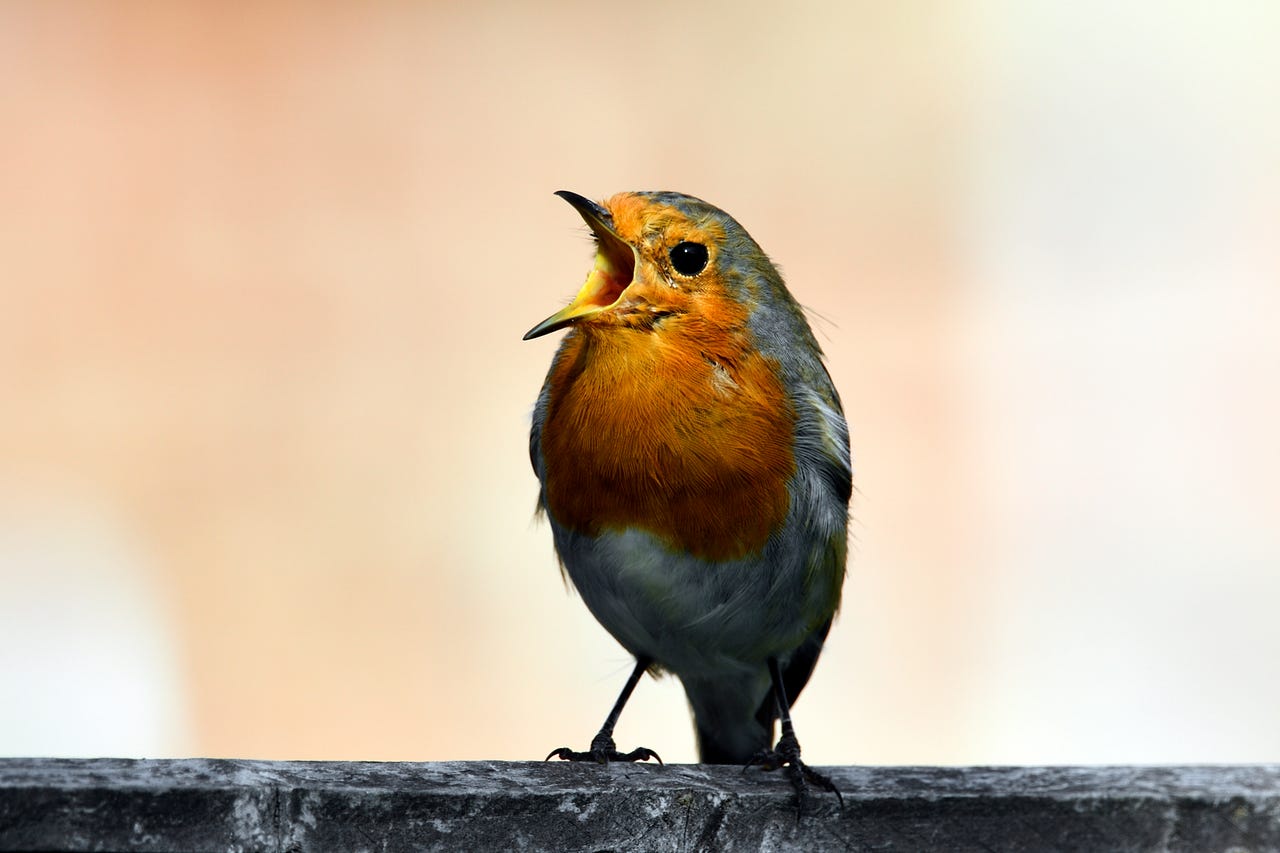































 Getty Images/DESPITE STRAIGHT LINES (Paul Williams)
Getty Images/DESPITE STRAIGHT LINES (Paul Williams) Next to insects, birds sadly seem to get short shrift from humans.
We remain powerfully drawn to scenes of lions hunting in the Kalahari desert or rhinos jousting in eastern India, but remain mostly oblivious to vibrant scenes of life and love enacted under our very noses.
Also: AI might enable us to talk to animals soon. Here's how
The cacophony of evening traffic as birds stream back into their nests, the diligence of solitary hunters of garden worms, the urgent shrieks of young parents, the furious battles among rival suitors -- these are all everyday dramas that are enacted everywhere around you, and you don't have to fork out a small fortune to observe.
However, not knowing what you're looking at or listening to can be frustrating. Sure, a blue jay is pretty hard to miss. But what about figuring out a raven from a crow or a swallow from a swift? Only the most committed fan is likely to have a field guide for birds lying around.
But what if, in our digitally saturated world, you had a tool at your fingertips?
Also: How to use ChatGPT: Everything you need to know
What if this tool allowed you to spot pretty much every bird in your backyard -- even ones that you don't see -- with almost 100% accuracy, upon the pressing of just one button?
Merlin Bird ID is accurate and simple to use.
Cornell Lab of OrnithologyAnd what if this magical app connected you to a community of bird lovers worldwide, so you could forge local and global connections with like-minded enthusiasts?
That tool exists -- and it's called the Merlin Bird ID app, which is produced by the Cornell Lab of Ornithology, and it is a veritable wizard in drawing you into the world of our feathered friends.
Also: These are my 5 favorite AI tools for work
The reason for its huge popularity -- it has been downloaded 12 million times and counting -- is that its makers have harnessed the power of artificial intelligence (AI), machine learning, and a global community of birders to make sure sightings are accurate.
When Merlin Bird ID first took flight, it had a little over 400 identifiable species in its library.
Today, that number has grown to an impressive 10,315 species that can be identified by the 55,000 photos and 26,000 audio recordings that its community of three million active users have contributed to the app's database.
There are many ways to ID a bird using Merlin: by sound, by a photo, or by answering five questions about a bird that you have been tracking.
Also: The best AI image generators
A fourth method, Sound ID, is the star of the app -- a feature that allows you to spot a bird via its chirping or song, a technique long considered to be an unattainable holy grail by the birding community.
However, a few years ago, Merlin lead researcher Grant Van Horn at the Cornell Lab of Ornithology had an idea. He realized that sounds could be looked at -- literally -- in a different way: as images.
"Each sound recording a user makes gets converted from a waveform to a spectrogram -- a way to visualize the amplitude [volume], frequency [pitch], and duration of the sound," said Grant Van Horn. "So just like Merlin can identify a picture of a bird, it can now use this picture of a bird's sound to make an ID."
Merlin's Sound ID feature converts live bird sounds to images, which are then put through a machine-learning engine to figure out possible matches.
Cornell Lab of OrnithologyIn a remarkable act of collaboration, the global bird community first pitched in to help recognize each bird species with their own recordings.
Contributors sent in well over a hundred hours of audio containing bird sounds along with an equivalent number of background sounds, such as car horns and whistles.
Also: How does ChatGPT actually work?
These recordings were then edited, tagged, and converted into spectrograms for the appropriate species.
As the researchers at Cornell have described, they then fed these images -- along with photos of the birds -- into a computer vision model called a deep convolutional neural network, which uses a gradient descent algorithm.
Now, when you hit the button on Merlin to record bird sounds in your backyard, the model digests all of the sounds at work and transforms them immediately into spectrograms. Then, millions of "weights" in its algorithm try to match these "sound images" with appropriate ones in the dataset.
Also: How your kids can use ChatGPT safely, according to a mom
Meanwhile, the billion-plus bird observations in Merlin's database, submitted by global bird enthusiasts using the eBird observation platform, have saved considerable time by narrowing down which birds are likely to be hovering around you.
"Having this incredibly robust bird dataset -- and feeding that into faster and more powerful machine-learning tools -- enables Merlin to identify birds by sound now, when doing so seemed like a daunting challenge just a few years ago," said Drew Weber, who is a Merlin project coordinator.
I began by using the Photo ID feature in Merlin, pointing my camera toward a bird that was hopping about my backyard, with a rust-colored chest. I took a photo of it and asked Merlin to find out what it was.
Sure enough, using its machine-learning algorithm and thousands of photos in its database, Merlin correctly ID'd it to be an American robin. I added this geo-tagged specimen to my personal bird list.
Sound ID was my absolute favorite tool. I spent 15 minutes out on my deck observing a cluster of chattering sparrows, as well as a few industrious robins hopping about, peering intently at the ground for their evening meal.
Also: 5 ways to use chatbots to make your life easier
But when I activated Sound ID, a whole host of birds were unearthed as they chirped high up in the canopy on our walnut tree or in distant bushes. They were: a European starling, a northern cardinal, a house finch, a blue jay, a rose-breasted grosbeak (which was new to me), and a northern mockingbird.
It was strangely thrilling to house such a diversity of bird life in one's own backyard. The app then allowed me to listen to a variety of songs and calls from each bird -- all crowdsourced from bird lovers -- as well as to access spotting tips from experts.
Sometimes sounds can be deceiving, which is why the AI-powered Photo ID feature is also popular.
Cornell Lab of OrnithologyI was also able to swipe through a collection of stunning photos of the birds -- male, female, adolescent -- all of which were similarly crowdsourced by fellow birders, thereby imparting a vague sense of belonging to the whole undertaking.
It was through Merlin that I stumbled upon the wiles of the northern mockingbird. It turns out the bird happens to be a master mimic, a scourge of bird lovers everywhere for its abilities in imitating its winged buddies and inspiring inaccurate sightings. Apparently, it also does a pretty good job of car beeps and door slams.
Also: Real-time deepfake detection: How Intel Labs uses AI to fight misinformation
The authenticity of my bird list was now in serious jeopardy. Nevertheless, Merlin got me hooked on this mischievous creature enough to go off and do a little more research, which is when I came upon the following heartbreaking fact.
Northern mockingbirds sing at night and they mate for life. So, if you hear a mockingbird singing in the evening hours, they are either young males looking for partners or just one-half of an older couple singing a song of love for its lost mate.
Alas, not everyone is delighted about Merlin, including staunch birders who prefer their hobby to be undertaken in more traditional ways with binoculars and field guides.
They do have a point. An over-reliance on a smartphone camera and digital guide could reduce the ability to develop true skills as a birder, which involves careful observation of the species, its habits and proclivities, and its unique sounds.
Also: The best AI chatbots to try
Old-school observation also develops patience, a much-needed skill in our digitally saturated lives.
In addition, the write-up on each bird on Merlin is quite anemic. You will have to turn to a field guide for anything more detailed than a paragraph, which is what you get with the app.
Most importantly, a ready-to-serve app robs you a little bit of the process of discovery, where the journey to correctly identify a bird is the destination, which is especially true if you have a northern mockingbird lurking about.
But for the rest of us short on time and patience, but still filled with an ambition to learn more about our quickly disappearing surroundings courtesy of climate change and habitat destruction, this app will do very nicely.
Also: The 10 best ChatGPT plugins (and how to make the most of them)
After all, birds are crucial indicators of environmental health.
They also demand our wonder and respect. For instance, the bar-tailed godwit flies 6,800 miles (11,000 km) non-stop from Alaska to New Zealand without any layovers across nine days. The peregrine falcon is the fastest member of the animal kingdom, diving at speeds of over 200 mph. And the albatross spends the first six years of its life never touching land.
By pulling us into this amazing world, while using its vast community to track details such as migration and feeding patterns, apps like Merlin have become frontline tools that help preserve what's left of our unique but rapidly deteriorating environmental heritage.
 Etiquetas calientes:
Inteligencia Artificial
innovación
Etiquetas calientes:
Inteligencia Artificial
innovación